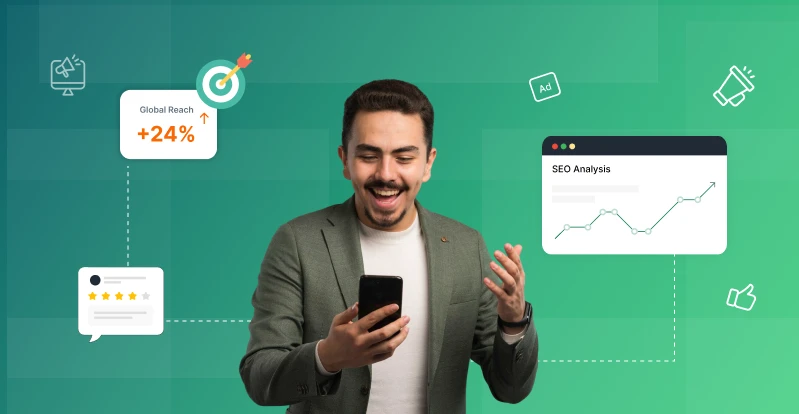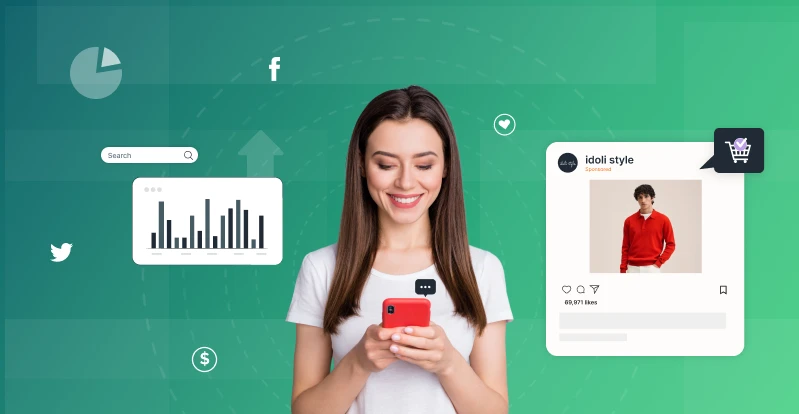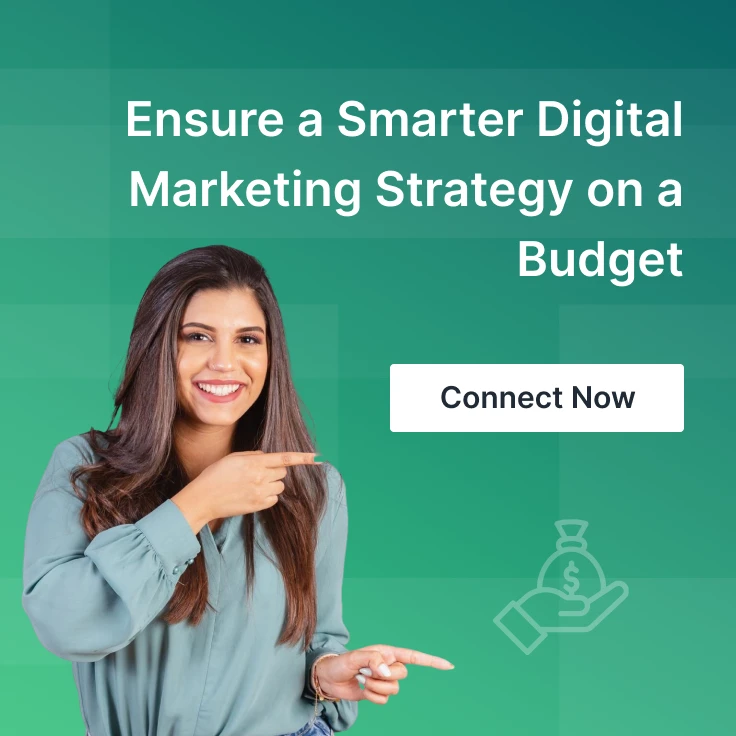How to Create a Cost-Effective Digital Marketing Strategy for Your Business in Australia

In today’s fast-paced, digital-first world, businesses must leverage the power of online marketing to stay competitive.
In Australia, where over 90% of people are internet users, digital marketing offers an incredible opportunity to connect with local and global audiences alike.
The growth of eCommerce, social media, and mobile usage in Australia has made digital marketing indispensable for businesses of all sizes.
However, despite the numerous opportunities available, many small and medium-sized businesses (SMBs) struggle to navigate the complexities of digital marketing on a budget.
Fortunately, cost-effective strategies exist that can drive traffic, increase brand awareness, and boost sales without breaking the bank.
Here, we’ll explore how to create a cost-effective digital marketing strategy that fits your business goals, with specific insights for Australian businesses. Whether you’re in Sydney, Melbourne, Brisbane, or Perth, these tactics will help you get the most out of your marketing spend.
Why Cost-Effective Digital Marketing is Important for Australia
Australia’s digital landscape presents unique opportunities, but it also poses certain challenges for businesses. As an island nation, marketing efforts must reach a geographically diverse and expansive population, from metropolitan hubs like Sydney and Melbourne to regional towns and rural areas.
A cost-effective digital marketing strategy is crucial for Australian businesses to manage their resources effectively and reach their target audience without overspending. Cost-effective digital marketing allows businesses to be competitive without needing a large marketing budget.
How to Develop a Cost-Effective Digital Marketing Strategy
Step 1: Define Your Business Goals and Set a Realistic Budget
Before diving into the specifics of digital marketing, it’s crucial to have a clear understanding of your business goals. What do you want to achieve with your marketing efforts? Are you looking to increase sales, generate leads, build brand awareness, or improve customer engagement? Defining these objectives will help you focus your efforts on the tactics that matter most for your business.
For Australian businesses, goals could range from increasing foot traffic to a brick-and-mortar store to boosting online sales for an eCommerce business. By identifying your goals, you can develop a targeted strategy that aligns with your business needs.
Once your goals are set, it’s time to determine your budget. The good news is that effective digital marketing doesn’t have to cost a fortune. Many businesses start with limited budgets, testing strategies, and scaling up as they see results. By being smart with your resources, you can optimise your marketing efforts and see measurable ROI.
Step 2: Identify Your Target Audience
Knowing who your target audience is, where they live, what they do, and how they behave is critical for crafting a digital marketing strategy that resonates with potential customers. In Australia, your target audience may vary depending on your industry, business model, and location. The digital habits of Australians also differ based on age, interests, and social media usage.
To begin identifying your audience, ask yourself:
- Who are my ideal customers? Consider demographics such as age, gender, income, location, and occupation. For example, if you run a business in Melbourne offering sustainable fashion, your ideal customers may be eco-conscious individuals between the ages of 18 and 35.
- What are their pain points? What challenges do they face that your business can solve? Understanding their needs helps create compelling marketing messages that resonate.
- Where do they spend their time online? Different age groups and demographics engage with different platforms. Baby boomers might prefer Facebook, while millennials and Gen Z are likely to spend time on Instagram or TikTok.
For example, an Australian travel agency targeting young Australians may focus on Instagram and TikTok to showcase adventurous travel destinations, while a B2B service might concentrate efforts on LinkedIn.
By defining your audience in detail, you’ll be able to craft personalised content and advertising that speaks directly to the right people, enhancing engagement and improving conversion rates.
Step 3: Build a Strong Online Presence with Local SEO
Local search engine optimisation (SEO) is one of the most cost-effective ways to drive traffic to your website, especially if you’re targeting a specific geographic area in Australia. In fact, 46% of all Google searches are for local information, making local SEO a critical component of your strategy.
Claim and Optimise Your Google My Business (GMB) Listing
Claiming and optimising your Google My Business (GMB) listing should be the first step in your local SEO strategy. GMB is a free tool from Google that allows businesses to appear in local search results and Google Maps. A well-optimised GMB profile ensures that your business is visible when local customers search for products or services you offer.
When optimising your GMB listing, be sure to include:
- Accurate business name, address, and phone number (NAP): Consistency across online directories helps boost your local SEO rankings.
- Opening hours: Ensure your hours are up to date so customers know when to contact you.
- Photos and videos: Showcase your products, services, and facilities to create a more engaging profile.
- Customer reviews: Positive reviews not only enhance your credibility but also improve your local search rankings. Encourage your satisfied customers to leave reviews on your GMB profile.
Use Location-Specific Keywords
Incorporating local keywords is vital for improving your website’s visibility in search engine results. If you run a café in Sydney, using keywords like “best coffee in Sydney” or “Sydney café near me” can significantly increase the likelihood of attracting local customers.
In addition to optimising your website’s content with location-specific terms, consider adding location-based pages for each of your service areas. For example, a plumber offering services across multiple suburbs in Melbourne could create individual pages targeting each suburb.
Encourage Reviews and Local Engagement
Customer reviews play a significant role in local SEO, so it’s important to actively encourage satisfied customers to leave positive feedback. You can also engage with local customers through blog posts, local events, or sponsorships that highlight your presence in the community.
Step 4: Leverage Social Media Marketing
Social media is a dynamic and affordable way for Australian businesses to connect with their audience. According to the latest data, Australians spend an average of 1 hour and 53 minutes per day on social media platforms, making it an ideal channel for marketing.
The key to social media success is focusing on platforms that align with your audience’s preferences and habits. For example:
- Facebook: This platform is popular across all age groups and is ideal for businesses aiming to build brand awareness and engagement.
- Instagram: Highly visual, Instagram is perfect for businesses in industries like fashion, food, travel, and beauty. It’s also a great platform for influencer marketing.
- LinkedIn: Ideal for B2B businesses, LinkedIn allows you to connect with professionals and share thought leadership content.
- TikTok: With its explosive growth among Gen Z, TikTok is an excellent choice for businesses targeting younger audiences.
Create High-Quality, Engaging Content
Regardless of the platform you use, it’s essential to create content that resonates with your audience. Here are a few ideas for social media content:
- Behind-the-scenes content: Show your audience the human side of your business, whether it’s a day in the life of your team or the process behind your products.
- User-generated content: Encourage customers to share photos or videos using your product or service. Reposting this content builds community and trust.
- Special promotions or offers: Share limited-time discounts, events, or seasonal offers to keep your followers engaged and encourage action.
Paid Advertising: Start Small, Scale Gradually
While organic social media strategies are free, paid social media advertising is a great way to amplify your reach. Platforms like Facebook and Instagram allow you to set specific budgets, making it easier to run cost-effective campaigns.
Start with a small budget to test your ads, tweaking the targeting and creatives until you find a combination that works. As you see positive results, you can scale your ad spend accordingly.
Step 5: Implement a Content Marketing Strategy
Content marketing is one of the most powerful and affordable methods for driving traffic, building brand authority, and improving customer loyalty. The key to successful content marketing is focusing on quality over quantity.
Here are some tips for creating a content strategy that resonates with your Australian audience:
Start Focusing on a Blog
Posting blogs is a great way to share valuable content with your audience while boosting your SEO. The key is to write content that is relevant to your industry and answers your customers’ questions.
Repurpose Your Content
Don’t let your content go to waste after one use. Repurpose blog posts into videos, infographics, or social media posts to reach a broader audience. For example, a blog post about “How to Start an Online Store in Australia” can be turned into a video tutorial or a series of Instagram stories.
Focus on Evergreen Content
Evergreen content is something that remains relevant over time. Topics like “How-to guides,” “FAQs,” and “Beginner’s tips” are examples of content that will continue to attract visitors long after they are published.
Guest Blogging and Collaborations
Consider guest blogging or collaborating with other local businesses in Australia to reach new audiences. By contributing content to other websites or partnering on campaigns, you can grow your network and enhance your credibility in the industry.
Step 6: Harness the Power of Email Marketing
Email marketing is a powerful tool for nurturing leads, building customer loyalty, and driving sales. It is especially cost-effective because you own your email list and have full control over the messages you send.
Segment Your Email List
Rather than sending generic emails to your entire list, segment your audience based on factors like location, purchasing behaviour, or interests. For example, an eCommerce business in Australia can send personalised offers based on past purchases, or a service-based business can send local event reminders.
Automate Your Campaigns
Automating email campaigns saves time and ensures timely communication. Consider setting up automated sequences like:
- Welcome emails for new subscribers
- Abandoned cart emails to recover lost sales
- Follow-up emails to keep customers updated, informed, and engaged
- Birthday emails with special offers for customers
Monitor Performance and Optimise
Tracking metrics such as open rates, click-through rates, and conversion rates helps you understand what’s working and what’s not. Optimise your email campaigns based on this data to improve performance and achieve better results.
Step 7: Track, Measure, and Optimise Your Digital Marketing Efforts
One of the most important aspects of a cost-effective digital marketing strategy is continuous improvement. By regularly tracking and analysing your results, you can ensure that your efforts are aligned with your business goals and driving the best possible outcomes.

Key Metrics to Monitor:
- Website Traffic: Tools like Google Analytics allow you to track how many people visit your website and where they come from. This helps you understand which marketing channels are driving the most traffic.
- Conversion Rates: Track how many visitors take the desired actions on your website, such as making a purchase or filling out a contact form.
- Social Media Engagement: Measure likes, shares, comments, and click-through rates to gauge how your content resonates with your audience.
- Email Performance: Monitor open rates, click-through rates, and unsubscribes to optimise your email marketing campaigns.
Step 8: Focus on Retargeting Ads for Better Conversions
When it comes to cost-effective digital marketing, retargeting ads are a game-changer. Retargeting involves displaying ads to people who have previously interacted with your website, social media profiles, or email campaigns but didn’t convert. For Australian businesses, this strategy can significantly improve conversion rates without needing to attract new traffic.
How Retargeting Works
Let’s say a potential customer visits your online store but leaves without making a purchase. Using retargeting ads, you can follow them across the web, showing them ads related to the products they viewed or added to their cart. This keeps your brand top of mind and encourages them to return to complete the purchase.
Why Retargeting is Effective in Australia
In Australia, online shopping is increasingly popular, with a significant portion of the population browsing multiple websites before making a decision. Retargeting ads allow you to remind those potential customers of what they liked, creating an opportunity to re-engage them.
Platform Options for Retargeting Ads
Several platforms support retargeting ads, including:
- Facebook and Instagram: With their vast user bases, these platforms offer robust retargeting options, including dynamic product ads that show users exactly what they viewed on your website.
- Google Display Network: Google offers a wide range of retargeting options across its network of websites, giving you exposure to a large audience.
- LinkedIn: If you’re in a B2B space, LinkedIn’s retargeting features are ideal for targeting decision-makers who previously interacted with your content.
Setting a Budget for Retargeting Ads
Retargeting ads tend to be more cost-effective than standard ads because you’re targeting people who have already shown an interest in your business. Set a clear budget and bid strategy that ensures you are reaching potential customers efficiently without overspending.
Step 9: Consider Affiliate Marketing Partnerships
Affiliate marketing is a performance-based marketing strategy where you pay affiliates a commission for driving traffic or sales to your website. This can be a great way for Australian businesses to expand their reach with minimal upfront costs.
How Affiliate Marketing Works
You partner with affiliates, who are often bloggers, influencers, or websites relevant to your industry, and they promote your products or services in exchange for a percentage of the sales or leads they generate. The beauty of affiliate marketing is that you only pay when a sale or desired action occurs, making it a highly cost-effective strategy.
Why It Works for Australian Businesses
Affiliate marketing is especially effective in the Australian market, where many businesses operate in niche industries. Local influencers or content creators can help promote your products to highly engaged, targeted audiences. For instance, an Australian eco-friendly brand could partner with environmentally-conscious bloggers and influencers to reach a like-minded audience.
Setting Up an Affiliate Program
There are several affiliate marketing platforms you can use to set up and manage your program, such as:
- ShareASale
- Rakuten Marketing
- Refersion
Ensure that your affiliate program is easy to join and offers clear terms, attractive commission rates, and promotional materials to help affiliates succeed.
Step 10: Use Video Marketing to Build Trust and Engagement
Video content is one of the most engaging types of content, and it’s proven to increase conversion rates. Whether it’s a product demonstration, a behind-the-scenes look at your business, or a customer testimonial, video can humanise your brand and connect with your audience on a deeper level.
The Growing Popularity of Video in Australia
Australians are highly active video consumers, with YouTube being one of the most popular online platforms in the country. According to recent statistics, more than 90% of Australians watch online videos each month. This presents a great opportunity for businesses to harness the power of video marketing.
Creating Effective Video Content
Your video content doesn’t need to be highly produced or expensive. Many businesses successfully use simple, smartphone-filmed videos to engage their audiences. Here are some ideas:
- Product demos: Show potential customers how your products work and what sets them apart from the competition.
- Customer testimonials: Share authentic reviews from satisfied customers to build social proof and credibility.
- How-to guides: Help your audience solve a problem related to your products or services.
Distribute Your Videos Across Multiple Platforms
Once you’ve created video content, distribute it across various platforms to maximise your reach:
- YouTube: As one of the largest search engines, YouTube is ideal for hosting long-form content and tutorials.
- Facebook and Instagram: Share shorter videos on these platforms to engage your audience and drive traffic to your website.
- TikTok: For a younger, more dynamic audience, TikTok allows you to create fun, engaging short videos that have the potential to go viral.
Step 11: Collaborate with Local Influencers
Influencer marketing is another cost-effective way to reach your target audience. By collaborating with local Australian influencers who align with your brand, you can tap into their established audiences and generate leads without spending a lot of money.
Choosing the Right Influencers
When selecting influencers, it’s essential to focus on relevance rather than just reach. An influencer with a small but highly engaged audience may be more beneficial than one with a massive following but little engagement.
Look for influencers in your industry or niche. For example, if you run a boutique clothing store in Melbourne, collaborating with fashion influencers who post about styling and Australian fashion trends could help you reach potential customers.

Types of Influencer Collaborations
You can engage in various types of collaborations, such as:
- Product reviews: Send your products to influencers for them to review and share their thoughts with their followers.
- Sponsored content: Pay influencers to create content featuring your product or service.
- Giveaways: Partner with influencers to host a giveaway, encouraging followers to engage with your brand and increase visibility.
Setting an Influencer Marketing Budget
The key to cost-effective influencer marketing is working within your budget. Many micro-influencers (those with fewer than 10,000 followers) offer affordable rates and high engagement, making them an excellent choice for small businesses.
Step 12: Take Advantage of Referral Programs
Referral programs encourage your existing customers to recommend your products or services to others, often in exchange for rewards like discounts, free products, or loyalty points. This word-of-mouth marketing is a highly cost-effective way to acquire new customers, as you only reward those who bring in sales.
Creating a Referral Program
Design a referral program that’s simple for customers to understand and participate in. For example, a retail business could offer customers a 10% discount for every friend they refer who makes a purchase.
Promote Your Referral Program
To maximise participation, actively promote your referral program on your website, through email campaigns, and on social media. Make it easy for customers to share their referral links with their network.
Incentivising Referrals
Offer attractive incentives to encourage referrals. For example, if you run an eCommerce store, you might offer a discount to both the referring customer and the new customer.
Step 13: Monitor Your Competitors and Stay Ahead
To stay competitive in the ever-evolving digital marketing landscape, it’s essential to keep an eye on your competitors. Monitoring their activities can give you insights into what’s working for them and what’s not, allowing you to adjust your strategy accordingly.
Tools for Competitor Analysis
Several tools can help you monitor your competitors’ digital marketing efforts, including:
- SEMrush: Offers insights into competitors’ SEO and paid advertising strategies.
- Ahrefs: Provides data on backlinks, keyword rankings, and content strategies.
- Social Mention: Tracks social media mentions of competitors and identifies trends in their audience engagement.
By monitoring your competitors, you can stay updated on the latest trends in your industry and find opportunities to differentiate your business. Whether it’s through better content, more targeted ads, or unique promotions, always look for ways to outshine your competition.
Conclusion
Developing a cost-effective digital marketing strategy is essential for Australian businesses looking to thrive in the competitive online marketplace. By setting clear goals, identifying your target audience, optimising your online presence, and leveraging cost-effective tactics such as SEO, social media marketing, and email campaigns, you can make the most of your marketing budget.
Remember, digital marketing isn’t a one-size-fits-all approach, so be prepared to test different strategies, analyse your results, and optimise accordingly. With the right combination of creativity, data analysis, and strategic planning, you can develop a sustainable marketing strategy that grows your business and maximizes your ROI.
As the digital world continues to evolve, Australian businesses that stay agile, focused, and customer-centric will continue to grow, even on a modest marketing budget. To ensure a cost-effective digital marketing strategy, connect with a digital marketing expert to ensure limitless possibilities.





